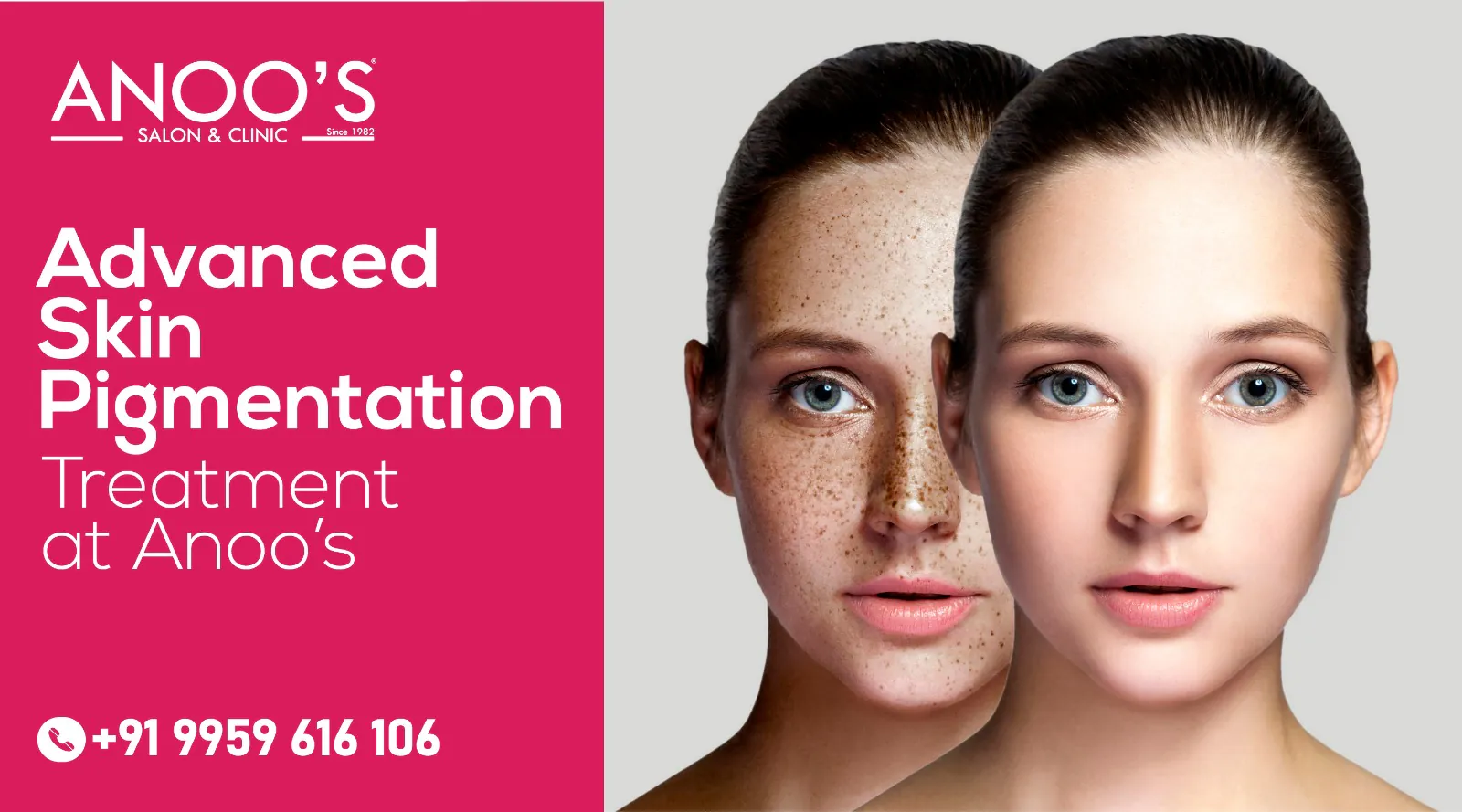
Pigmentation: Don’t Let It Get Under Your Skin!
Picture this – you are walking down the Marina beach, enjoying the sea, and suddenly you notice a patch on your skin that wasn’t there before. It bothers you, and wonder if it’s a serious issue. Relax, my friend! It might just be pigmentation, a common problem faced by many. Pigmentation refers to the discolouration of the skin caused by the excess production of melanin, a pigment that gives color to the skin. Let’s dive deeper into the different types of pigmentation and their treatments.
Melasma
Melasma is a type of hyperpigmentation that is most commonly seen in women. It appears as brown or gray patches on the face, especially on the cheeks, forehead, and upper lip. Melasma is caused by hormonal changes, such as those that occur during pregnancy or while taking birth control pills.
Treatment: The most effective treatment for melasma is a combination of topical creams and procedures such as chemical peels, microdermabrasion, and laser therapy.
Post-inflammatory hyperpigmentation
Post-inflammatory hyperpigmentation (PIH) is a type of hyperpigmentation that occurs after skin injuries such as acne, cuts, or burns. It appears as dark spots or patches on the affected area and can be stubborn to treat.
Treatment: The treatment for PIH includes the use of topical creams, chemical peels, and laser therapy. These treatments work by reducing melanin production in the affected area and speeding up the process of skin cell turnover.
Sunspots
Sunspots, also known as solar lentigines, are dark spots that appear on the skin after prolonged exposure to the sun. They are most commonly seen on the face, neck, chest, and hands. Sunspots are more common in people with fair skin and are a sign of sun damage.
Treatment: The treatment for sunspots includes the use of topical creams, chemical peels, and laser therapy. The use of sun protection, such as sunscreen and protective clothing, can also prevent the formation of new sunspots.
Vitiligo
Vitiligo is a condition in which the skin loses its pigment, resulting in white patches on the skin. It is caused by destroying melanocytes, the cells that produce melanin. Vitiligo can affect any body part, and its cause is unknown.
Treatment: The treatment for vitiligo includes the use of topical creams and ointments, phototherapy, and surgery. While there is no cure for vitiligo, these treatments can help to restore some color to the affected area.
Dark Circles
Dark circles are the result of pigmentation and are often seen under the eyes. They can be caused by genetics, lack of sleep, stress, and aging.
Treatment: The treatment for dark circles includes the use of topical creams, chemical peels, and laser therapy. The use of eye creams that contain vitamin C and retinol can also be helpful in reducing the appearance of dark circles.
Uneven Skin Tone
Uneven skin tone is a common concern for many people. It can be caused by a variety of factors, including pigmentation, sun damage, acne scars, and aging.
Treatment: The treatment for uneven skin tone includes the use of topical creams, chemical peels, and laser therapy. The use of a daily skincare routine that includes sunscreen and antioxidants can also help maintain an even skin tone.
Pigmentation may seem daunting, but with the correct information and treatment plan, it can be overcome. So, don’t let pigmentation get in the way of your confidence and beauty. Whether you are dealing with melasma, PIH, sunspots, vitiligo, dark circles, or uneven skin tone, Anoos.com provides a range of treatments that are safe and effective. Visit Anoos.com to learn more about their pigmentation treatments and take the first step towards clear, even skin today! Who knows, you may just inspire the next South Indian movie star!

